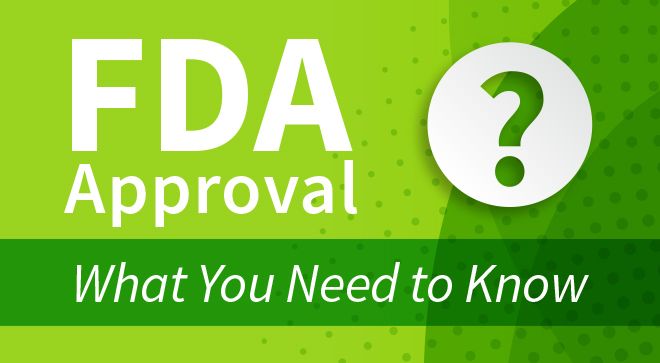Ojemda Preserves Quality of Life, Limits Cognitive Effects in Low-Grade Glioma
Ojemda treatment for certain patients with pediatric low-grade glioma is “well-tolerated” and may be safer than traditional options, an expert told CURE®.
Ojemda may provide a safer treatment option for pediatric patients with low-grade glioma.

The recent accelerated Food and Drug Administration (FDA) approval of Ojemda (tovorafenib) is “exciting” for the community of patients with pediatric low-grade glioma, especially as it may preserve quality of life and cognitive function in a way that other therapies may not, an expert told CURE®.
Ojemda is the first FDA-approved treatment for patients with pediatric low-grade glioma who have BRAF fusions, according to Dr. Daniel Landi, a pediatric neuro-oncologist at Duke Cancer Institute in Durham, North Carolina. The drug works by preventing the growth of tumors that cannot be surgically removed.
“Generally, these tumors occur in a part of the brain that you can't remove but still put the patients at high risk of problems,” he said. “[It’s] related to things like vision, long-term neurocognitive status, movement, strength, coordination or endocrine function from the brain. So the purpose of this medicine is to try and limit damage while preserving a very good quality of life.”
The newly approved drug is an oral inhibitor that is given in pill or liquid form, Landi explained. He also noted that Ojemda can be taken with food, which is not safe to do with other oral targeted treatments.
Ojemda and Quality of Life in Patients with Low-Grade Glioma
Traditional treatment options for children with low-grade glioma included surgery, radiation and chemotherapy. However, Landi explained that these were not optimal because of the risk of permanent damage it could cause in children.
“Treatments like radiation, which is energy delivered, is [something we] try very hard not to do particularly in young people,” Landi said. “Radiation introduces the risk of long-term neurocognitive damage. It’s harder for some patients who have received radiation to form new memories to learn processing speed.”
Of all treatments, Landi stated that Ojemda is a “pretty well-tolerated medicine that’s both effective at controlling the tumor while having a good quality of life for patients receiving it across the board.”
The most common side effects patients experienced included rash, hair color changes, fatigue, viral infection, vomiting, headache, hemorrhage and fever. Other common side effects were dry skin, constipation, nausea and upper respiratory tract infection, the FDA alert listed.
Landi emphasized that Ojemda’s approval is important for respective patients and caregivers because there aren’t many drug approvals for central nervous system tumors.
“To have an approval somewhere at least puts the drug out there — specifically for the most common [genetic] drivers in the second plus line [of treatment] — allows providers, patients and families, easy access,” Landi explained.
Addressed Unmet Needs and Persistent Needs
Another important aspect of Ojemda is that patients who don’t respond to other oral targeted treatments have shown responses to Ojemda, Landi said. Other treatments have included Tafinlar (dabrafenib) for patients with BRAF V600E mutations, which was approved by the FDA in 2023.
“The reason why that’s important is that there are patients for whom if you don’t have a medical therapy, and the tumor is growing and causing damage, then [doctors] would assess the balance between things that are more dangerous, like aggressive surgery or specifically radiation.”
Nevertheless, some unmet needs persist with Ojemda, and more research must be done, Landi said.
“We don’t know if Ojemda is better or worse than other [treatments], we don’t really know if chemotherapy versus the other oral targeted [therapies] are better or worse in this regard,” he said. “Ojemda is definitely an exciting medicine, and the pediatric low-grade glioma community is excited to have this in our arsenal.”
READ MORE: New Drug Shows ‘Encouraging’ Outcomes for Pediatric Brain Tumor Treatment
About the FIREFLY-1 Trial in Low-Grade Glioma
The approval of Ojemda was based on findings from the FIREFLY-1 clinical trial, according to a press release from the FDA about the approval.
The phase 2 trial evaluated approximately 140 patients with low-grade glioma, the listing on ClinicalTrials.gov stated. Patients in the study were ages 6 months to 25 years old and harbored BRAF fusions, such as the BRAF V600 mutation.
“The primary objective of this study was to determine the extent the tumors grew or didn’t grow based on an MRI [scan],” Landi explained. “The study also looked at vision outcomes, which is an important parameter. A lot of these tumors affect vision or put vision at risk. Those data aren't compiled or reported as part of the approval, but that's an important part of the study that was included.”
This trial was also a single-arm study, Landi explained, meaning it did not compare Ojemda to another type of treatment.
“[Ojemda is] now distributed commercially, it's easier to get the drug,” he said. “Its existence as a therapy is compelling because the data the FIREFLY-1 studied hasn't been compared head-to-head with other agents.”
Following the phase 2 study, a phase 3 trial called FIREFLY-2 will compare the treatment of Ojemda and standard-of-care chemotherapy in the same patient population. The study is expected to enroll approximately 400 patients, according to a listing on ClinicalTrials.gov.
For more news on cancer updates, research and education, don’t forget to subscribe to CURE®’s newsletters here.
Dickey Betts Died, ‘Shopaholic’ Author Announces Cancer Diagnosis and More
April 19th 2024From the Allman Brothers Band’s singer Dickey Betts dying after a cancer diagnosis to the “Shopaholic” author announcing her glioblastoma diagnosis, here’s what is happening in the cancer space this week.
Read More
Patrick Swayze’s Widow Reflects His Cancer, Demi Moore Speaks About Breast Cancer and More
April 12th 2024From Patrick Swayze’s widow recalling his pancreatic cancer diagnosis to Demi Moore speaking about her aunt’s courage during cancer, here’s what’s going on in the oncology space this week.
Read More